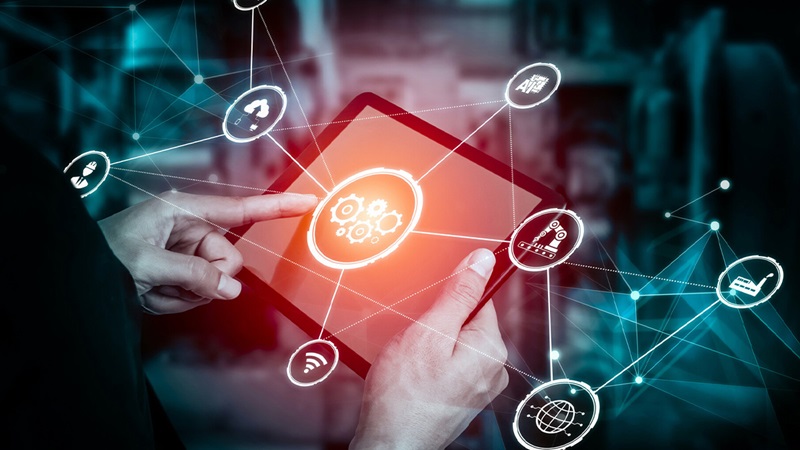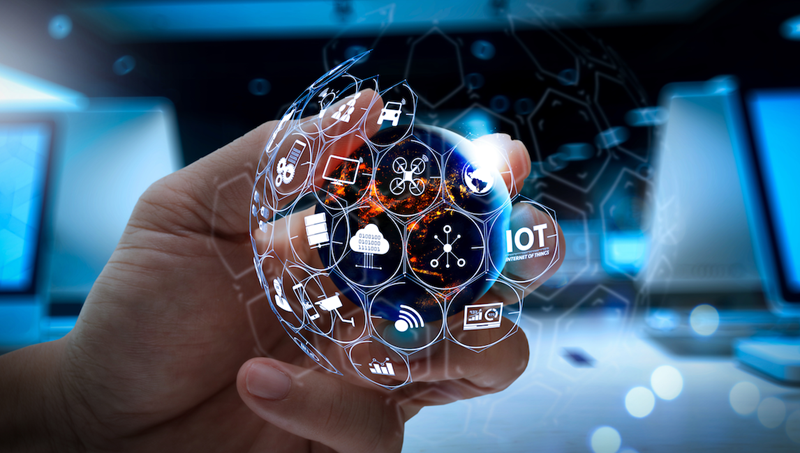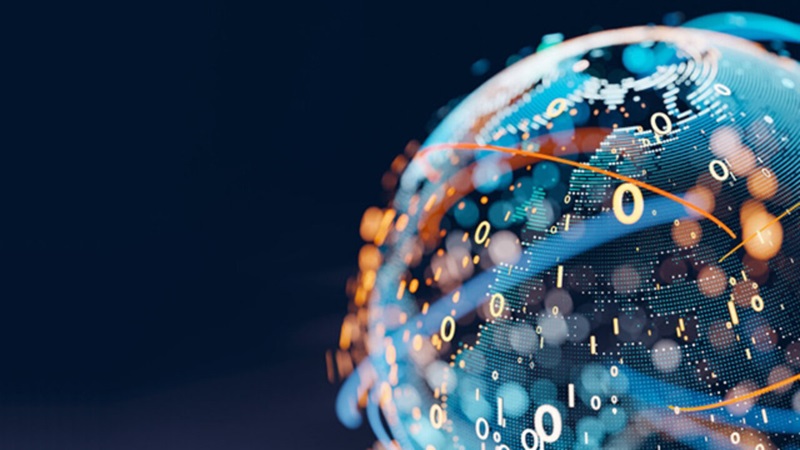Interoperability in the Internet of Things (IoT) is a fundamental aspect that needs utmost attention. It is a concept that refers to the ability of different IoT systems and devices to communicate, exchange data, and use the information that has been exchanged effectively. It is the capability of various IoT devices to work together in harmony despite the differences in their design, technology, installation, and operation. Achieving interoperability in the IoT is crucial because the vast number of connected devices necessitates a common language or platform for effective communication.
However, the achievement of this interoperability is met with various challenges. One of the primary challenges is the lack of standardization in the IoT industry. With numerous manufacturers developing devices with unique specifications and communication protocols, achieving a unified communication framework becomes complex. Different IoT devices operate on different networking technologies, have varying data storage requirements, and use distinct data processing algorithms. Moreover, the proprietary nature of many IoT solutions further exacerbates the interoperability issue, as manufacturers often aim to lock in customers to their ecosystem.
To effectively achieve interoperability in IoT, certain measures need to be undertaken. The development and adoption of universal standards is vital. These standards would provide a common protocol for all IoT devices to adhere to, simplifying their interaction and data exchange. Open-source platforms could also play a significant role in achieving interoperability. They provide a common ground for developers to build upon, leading to the creation of compatible IoT devices. Interoperability can also be enhanced through the use of APIs (Application Programming Interfaces) that allow different software components to communicate.
Furthermore, the implementation of middleware solutions can also help bridge the gap between different IoT devices. Middleware serves as an intermediary layer that translates information from one device to another, enabling them to understand and process each other’s data. Data normalization is another strategy that can enhance IoT interoperability. This process involves converting all data to a common format, allowing disparate IoT devices to interpret the data seamlessly.
Another key aspect to consider in achieving interoperability is security. With the increasing connectivity and data exchange between devices, security risks also rise. Therefore, it is essential to incorporate robust security measures in the interoperability framework to protect the integrity and confidentiality of data. Encryption techniques, secure authentication methods, and regular security audits can help ensure a safe and secure IoT environment.
In conclusion, achieving interoperability in the Internet of Things is a complex yet essential task. It requires concerted efforts from manufacturers, developers, and stakeholders to develop and adopt universal standards, implement middleware solutions, and ensure robust security measures. The achievement of interoperability will ultimately lead to a more efficient and seamless IoT ecosystem, enhancing the overall user experience and paving the way for further IoT innovation.

Key Standards for IoT Interoperability
Interoperability is a fundamental aspect of the Internet of Things (IoT) ecosystem, which ensures seamless interaction amongst different IoT devices, applications, and systems. Key standards for IoT interoperability involve a set of technical specifications, protocols, and guidelines that are globally accepted and implemented to facilitate a smooth exchange of information amongst IoT entities. These standards are formulated by recognized international organizations like the International Organization for Standardization (ISO), the Institute of Electrical and Electronics Engineers (IEEE), and the Internet Engineering Task Force (IETF). They aim to ensure that every IoT device, regardless of its make or manufacturer, can effectively communicate and interact with each other to perform a common task.
The interoperability standards encompass various aspects including data format and exchange, network connectivity, device compatibility, and security protocols. For instance, protocols like MQTT and CoAP are designed to facilitate efficient message exchange between IoT devices over the network, regardless of the device type or network conditions. Similarly, data standards like JSON and XML ensure that data generated by different IoT devices is uniformly structured and can be universally understood.
Interoperability standards also address the critical aspect of security in IoT systems. With the rapid growth of IoT and the increased risk of cyber threats, security standards like Transport Layer Security (TLS) and Datagram Transport Layer Security (DTLS) ensure secure data transmission between IoT devices over the network.
In essence, key standards for IoT interoperability form the backbone of the IoT ecosystem, enabling diverse devices to coexist and collaborate efficiently. However, they also pose certain challenges, especially in terms of their adoption and implementation, due to the vast diversity of IoT devices and systems. Therefore, the future of IoT largely depends on how effectively these interoperability standards are adopted and implemented across the global IoT landscape.
Challenges in IoT Integration
The integration of Internet of Things (IoT) technology presents several significant challenges that need to be effectively addressed in order to maximize the benefits it offers. One of the most critical hurdles is ensuring data security and privacy. With billions of devices interconnected and continuously exchanging information, the risk of data breaches and cyber-attacks is amplified. This necessitates robust encryption protocols and stringent security measures to protect sensitive data.
Another considerable challenge is the lack of standardization across IoT devices and platforms. This can lead to compatibility issues, hindering seamless interoperability and limiting the potential of IoT systems. Additionally, managing the vast volume of data generated by IoT devices can also be problematic. Traditional data processing and storage methods may prove inadequate, necessitating the adoption of advanced analytics and cloud-based storage solutions. IoT integration also prompts concerns about energy efficiency, as many IoT devices are battery-operated and energy constraints could impact their performance and lifespan.
Furthermore, the cost of implementing and maintaining IoT infrastructures can be high, posing a challenge for businesses and organizations with limited resources. Lastly, there are issues related to user acceptance and adoption, as not all users may be comfortable or familiar with using IoT technology. Education and training, as well as intuitive, user-friendly design, can play a key role in overcoming this challenge. Thus, while IoT integration promises numerous advantages, these challenges must be addressed to fully harness its potential.

Strategies for Seamless IoT Communication
Seamless IoT communication is the cornerstone of effective digital transformation in today’s interconnected world. To ensure smooth data transmission among IoT devices, several strategies are required. The foremost strategy is to establish a robust and secure network architecture. This should be able to handle the colossal amounts of data generated by IoT devices and be resistant to common security threats that could compromise data integrity and privacy.
The second strategy is to incorporate interoperability into the design and deployment of IoT systems. This means that devices from different manufacturers should be able to communicate and work together effectively. Standardization is key to achieving this, and as such, IoT developers are encouraged to adhere to universal communication protocols and industry standards. Thirdly, a proactive approach to managing network congestion is vital. This can be achieved through efficient data management techniques such as edge computing, which involves processing data closer to the source, thus reducing the load on the network.
Fourthly, regular system updates and maintenance are crucial to counter potential communication issues and stay ahead of evolving technology trends. Lastly, user-friendliness should be considered in the design and implementation of IoT systems to ensure seamless interaction between users and devices. By employing these strategic measures, the potential of IoT can be fully harnessed, resulting in improved operational efficiency, cost-effectiveness, and enhanced user experience. However, it is important to note that the success of these strategies relies heavily on continuous research and innovation in IoT technology, as well as the commitment of stakeholders to maintain best practices in IoT communication.
The Role of APIs in IoT Interoperability
APIs, or Application Programming Interfaces, play a critical role in IoT (Internet of Things) interoperability, which refers to the seamless integration and interaction of various IoT systems and devices. APIs serve as the connecting glue between different software components, facilitating the exchange of data and the execution of tasks between them. In the context of IoT, APIs have an even more crucial role as they allow disparate IoT devices and applications to communicate with each other, regardless of their underlying architecture or technology. This is essential for creating a cohesive IoT ecosystem where all elements can work in harmony.
APIs ensure that IoT devices, applications, and platforms can understand each other’s data and instructions, effectively bridging the gap between different technology stacks. They translate the communication into a universal language that all components in the system can understand, enabling a high level of interoperability. This is vital in scenarios where real-time data sharing and synchronization across multiple devices and platforms is required.
In addition, APIs also play a significant role in expanding the capabilities of IoT systems. They allow developers to tap into the functionalities of other software components and services, extending the features of their IoT solutions without having to build everything from scratch. This not only speeds up the development process but also encourages innovation as developers can experiment with different combinations of functionalities.
Moreover, APIs contribute to the security of IoT systems. They provide controlled access to the functionalities and data of IoT devices, ensuring that only authorized entities can interact with them. This is especially important considering the sensitive nature of the data handled by many IoT devices.
In conclusion, APIs are fundamental to IoT interoperability, enabling seamless communication, extending capabilities, and ensuring security in the IoT landscape. Their role is becoming increasingly significant as the adoption of IoT continues to grow and the need for integrated IoT solutions becomes more pressing.

Future Trends in IoT Standardization
The future of Internet of Things (IoT) standardization is a topic of intense focus and discussion within the technological sphere. It is anticipated that standards in IoT will evolve to become more comprehensive, interoperable, and unified, thereby facilitating seamless integration of diverse IoT devices and platforms. Currently, a significant challenge in IoT deployment is the existence of numerous proprietary systems, which lack compatibility with each other. However, the trend is moving towards open standards that would promote interoperability between various devices and systems.
Further, there is a growing emphasis on ensuring data security and privacy in IoT standardization. With the increasing number of connected devices, the potential for data breaches escalates. Therefore, future IoT standards will likely include stringent data protection measures to mitigate such risks.
Another trend in IoT standardization is the shift towards the use of artificial intelligence (AI) and machine learning (ML). These technologies are expected to play a central role in managing and analyzing the vast amounts of data generated by IoT devices. Hence, the standardization process will likely incorporate guidelines for AI and ML applications.
Moreover, the development of IoT standards is also moving towards the inclusion of ethical considerations. As IoT devices become more pervasive in our everyday lives, the ethical implications of their use become more significant. Therefore, future IoT standards may include provisions to ensure that IoT devices are used in a manner that respects individual privacy and human dignity.
In conclusion, the future trends in IoT standardization are moving towards a more open, secure, intelligent, and ethically conscious direction. These developments will not only enhance the functionality and usability of IoT devices, but also ensure that they are used in a manner that respects our rights and values.
